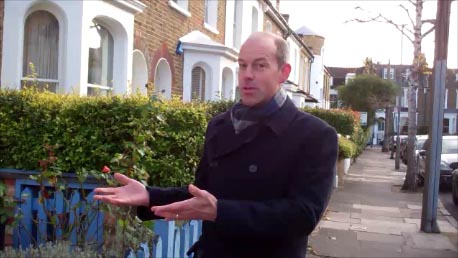Kerb appeal – guest post by Phil Spencer
If you’ve watched any of the property shows that I present, you have more than likely heard me mention kerb appeal. It may seem like an overused term, but it’s fundamental if you want to get buyers through the door. Kerb appeal really can make or break a deal, some people can’t see potential and in my experience a tired looking façade can stop a buyer in their tracks.
People tend to make their minds up about a property within 8 seconds, and in some cases this isn’t even long enough to reach the front door. Although kerb appeal probably won’t add value to your home it will make it – and probably your neighbours properties – more saleable, which is more important than ever in the current market.
Some houses naturally exude curb appeal, others don’t. But kerb appeal isn’t just about period charm or established planting schemes, every house can have kerb appeal. Kerb appeal is about making the best of a property and keeping it well maintained: if the frontage of the property looks in good repair buyers will assume this is reflected throughout your house.
Buyers want to know that they are moving to an area where the residents take pride in their properties. Considering this, even if the approach to your property, for instance the path or pavement, is the responsibility of the council, when you have viewings it’s always worth making sure you pay attention that these areas in-front of your house are neat and tidy. The addition of some greenery is always a winner, and this can be achieved even during the winter months with some structured evergreen planting, such as box in planters by the front door.
If your property is semi-detached or terraced, creating kerb appeal needs to be done holistically. Keeping continuity among the immediate houses not only creates a sense of community, but you can also benefit from economies of scale by buying paint and other materials in bulk and splitting the costs with your neighbours.
If you live in a flat, try to encourage fellow residents to help you give the communal areas some attention, a coat of paint and having the carpets steam cleaned can make a huge difference – but remember to ask the freeholder’s permission in advance.
First impression really count and the first thing people will see is your boundary fence or hedge. Make sure fences are well maintained by replacing missing posts/slats and staining or painting wooden fences. It’s only a few hours work for a tradesperson to repair and paint a garden fence and if it gets buyers through your front door, it’s a hundred odd pounds well spent. Like fences, hedges should be kept low to allow as much light as possible to enter your property.

So many people neglect the importance of their front door. Painting your door in an attractive dark shade, and either polishing or replacing your door furniture can make a huge difference to a buyer’s first impressions. Dark colours are said to work best, but take a look at your neighbours’ doors and if light colours are a theme consider a more muted grey or pale green, neither of which colours are likely to alienate potential buyers.
Even if you’re not looking to sell your property it’s important to maintain its exterior, not only because it’s good practice but because you will be greeted by it every day. If you tackle exterior maintenance jobs as they arise you are also likely to save money in the long run and when you come to sell your property in the future, you are less likely to encounter any nasty structural surprises.
Kerb appeal is key, so if you’re in any doubt it is worth asking your agent:
- What are the weak points of my house?
- What can I do to make the frontage of my property more appealing?
Projects to improve a property’s kerb appeal aren’t generally expensive. And for that reason tackling them as ongoing maintenance work is a worthwhile activity that will allow you to make the most of your property while you’re living in it and when you come to sell it.
Best wishes PHIL






One Comment